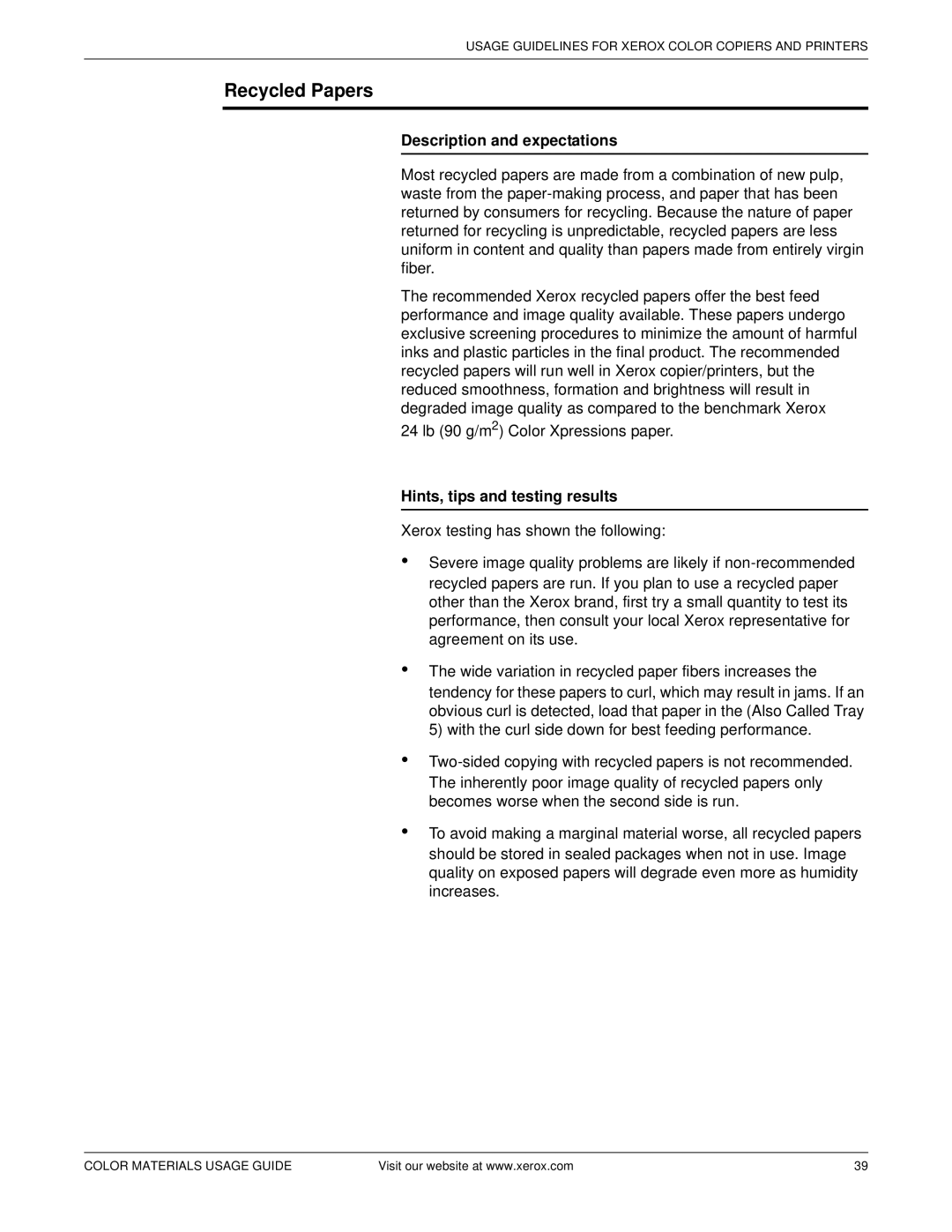
USAGE GUIDELINES FOR XEROX COLOR COPIERS AND PRINTERS
Recycled Papers
Description and expectations
Most recycled papers are made from a combination of new pulp, waste from the
The recommended Xerox recycled papers offer the best feed performance and image quality available. These papers undergo exclusive screening procedures to minimize the amount of harmful inks and plastic particles in the final product. The recommended recycled papers will run well in Xerox copier/printers, but the reduced smoothness, formation and brightness will result in degraded image quality as compared to the benchmark Xerox
24 lb (90 g/m2) Color Xpressions paper.
Hints, tips and testing results
Xerox testing has shown the following:
•Severe image quality problems are likely if
•The wide variation in recycled paper fibers increases the tendency for these papers to curl, which may result in jams. If an obvious curl is detected, load that paper in the (Also Called Tray 5) with the curl side down for best feeding performance.
•
•
To avoid making a marginal material worse, all recycled papers should be stored in sealed packages when not in use. Image quality on exposed papers will degrade even more as humidity increases.
COLOR MATERIALS USAGE GUIDE | Visit our website at www.xerox.com | 39 |
